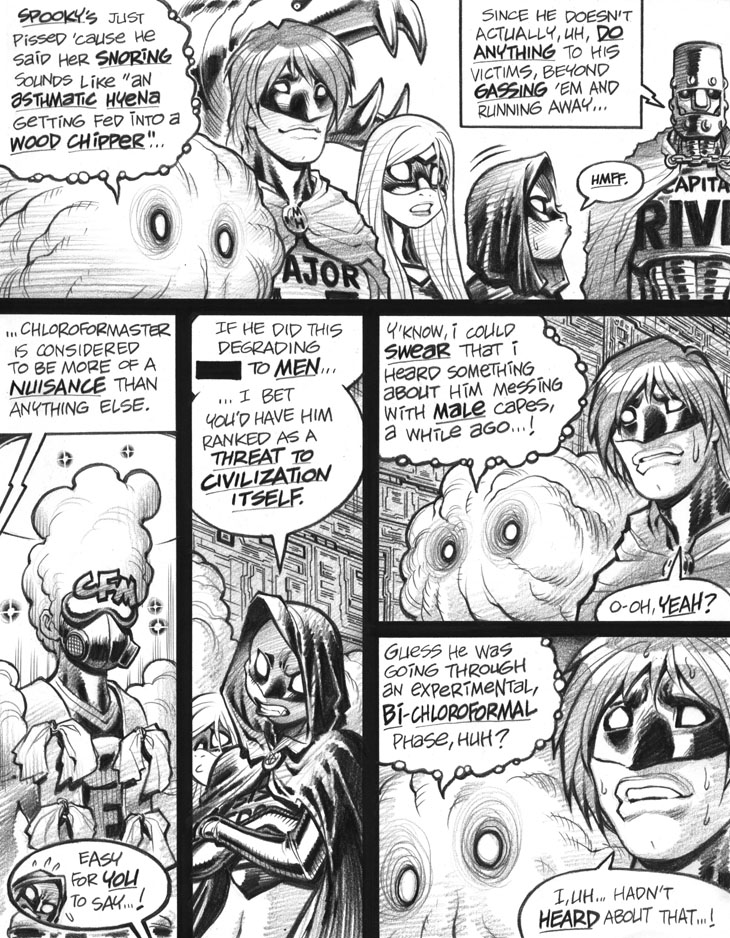Got nothin’ for today’s commentary, so it’s time for another comics-technique Twitter ramble! Enjoy?
Here’s an odd bit of work-process trivia: I never draw “thumbnails”—that is, very small roughs—for my comic pages, at least initially.
Nonethless, "thumbnailing” is unquestionably a commendable approach, as scribbling teeny page roughs demands compositional clarity and simplicity.
Plus, with multiple comics pages side-by-side on a single thumbnailed rough, you can spot page-turn issues or page-to-page layout problems.
“Page-turn” issue: Ideally, a Big Reveal shouldn’t be on an odd-numbered page, as the reader might see it when turning to the previous page.
“Page-to-page” layout problem: If, say, you had two facing (printed) pages with full bleeds, and their panel tiers accidentally lined up.
Full-bleed pages—where the art extends to the printed page’s edge—can look like an unplanned double-page spread if their panel tiers align.
So, if you’re drawing wee thumbnails for a comic, your facing pages should be drawn next to each other—p.2 & p.3, p.4 & p.5, and so on.
Problem is, I find working that small to be intensely constrictive and maddeningly limiting when I’m roughing out a comic page.
Often, drawing wee page thumbnails feels bizarrely suffocating and restrictive, like I’m trying to shove my head through a storm grate.
Figuring out a comic-page layout with the teeny figure sizes and cramped compositions a thumbnail rough demands just doesn’t work for me.
For Empowered, I draw my initial page roughs at the same size as a (relatively small) finished original page—8½” X 11.”
For regular-format pages—unlike Empowered’s squatter page size—my roughs are 8½” X 12â…ž”—legal-size paper trimmed down to comic proportions.
I only draw thumbnails of pages after the fact, when I recopy and redraw my full-size roughs at a much smaller scale to accompany a script.
In fact, I quite like drawing those wee, recopied thumbnails—but I had to do the first-draft roughs they’re based on at a much larger scale.
If you’re worried about compositional clarity when drawing larger roughs, just shrink ‘em down afterward to see how they look as thumbnails.
One advantage of page roughs drawn larger than wee thumbnails: You can scrawl your dialogue directly on the layout at a readable scale.
Note that the page roughs (or “name”) used by most mangaka use this advantage. Often, they’re just dialogue accompanying vague scribbles.
Lay out your comic pages using whatever technique works for you. Just ’cause many artists use teeny thumbnails doesn’t mean you have to.
-Adam Warren

